Table of contents
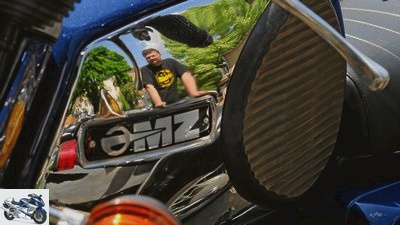
Siemer
Sports & scene
Presentation: Gabor’s MZ shop
MZ lovers in Berlin: Gabor’s MZ shop
Presentation: Gabor’s MZ shop
Content of
Some still value them as brave everyday companions, many as collectibles with potential. Gabor Pirntke and his people mean the good MZ two-stroke engines more than that.
Fred Siemer
08/30/2012
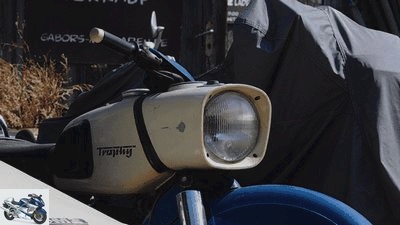
Siemer
MZ lovers in Berlin: Gabor’s MZ shop.
They don’t fit into blooming landscapes. At least not in the one promised after the fall of the Wall, so full of boom and consumption. No, the products of the motorcycle factory in Zschopau are more about equanimity and modesty, so it shouldn’t be surprising that there was a certain MZ fatigue when the D-Mark and VW Golf were waving from 1990 onwards. The two-stroke single-cylinder engines disappeared en masse in barns and cellars, on the scrap metal or to the west. Quite a few ES served there as inexpensive and lovable restoration objects. Parts were all available, and actually cost little.
It took the East a few years until the Renaissance and first had to discover the difference between glamor and goodness. But then: It was fun to smoke with the Emme through the avenues to jwd, to far out there. And somehow you could be proud that one of the largest motorcycle factories in the world once stood in Saxony. First DKW, then MZ. Whatever – today they all rattle MZ in the heart of many Ossis.
Gabor Pirntke didn’t need to go back to his own identity with Rangangang. The Berliner was 14 when the wall came down in his hometown, he knows his roots as well as his possibilities. As an apprentice, money was tight, so what was available was tweaked. And with that you were mobile, done. Gabor himself can no longer describe exactly why this rather pragmatic relationship has now turned into a deep affection.
But that’s the way it is, and maybe it has to do with the fact that you didn’t want to be wound up. Not Gabor and all the other MZ drivers. And it is certainly also due to the huge population: Above all, the 150s – in GDR times 16-year-olds were allowed to drive with them – is ubiquitous. In addition to the approximately 16,500 registered specimens, several thousand are still waiting in barns and cellars for their resurrection. They need parts, they have to be serviced and repaired.
Gabor started repairs. But soon discovered that many customers were no longer interested in somehow keeping their Emme running. No, it should go really well and look really good doing it. The search for original parts had begun and the run for rares began. That is rare with the Saxon mass products, but models of authorities can claim a certain exclusivity. The delivery trailer with wooden floor also. And in measure also the ETS. Namely, around 1970 formed the bridge between the volume models ES (front and rear with swing arm) and TS (front with telescopic fork, open frame at the bottom). It was created at the request of western importers, used the ES 250 frame, but already had a telescopic fork and a sleek buffalo tank. With 4,000 units built, the ETS 125 is the rarest bird from Zschopau, and the 250, which has been produced a good 16,000 times, is also in great demand today.
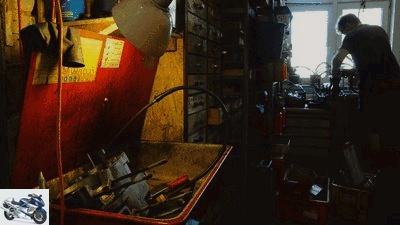
Siemer
Popular service: Have the engine done in Gabor’s engine booth, do the rest yourself.
Socialist motorcycle construction began with the delicately revised DKW RT 125, which was again produced in small series from 1950 under the name IFA (Industrievereinigung Fahrzeugbau). Large numbers were not possible because the modern DKW production facilities had ended up as reparations in the Soviet Union. In 1952 the factory was named VEB Motorradwerk Zschopau, since 1956 all Zschopau motorcycles have been named MZ, and in June of this year one of the great icons of this brand appeared with the ES 250. Fixed headlights, massive front fenders, lush side covers and comfortable seating determine their likeable, memorable appearance. The engine was a new design, except for the head, cylinder, carburetor etc. it was also in service in the ES 175 presented at the same time.
The brave RT did not retire until 1962, but its further developed engine also powered the new ES 125/150. The latter in turn put the ES 175 under such pressure that it was discontinued in the early 1970s. ETS and TS followed, finally ETZ 250 in 1981 and the small models with 125 and 150 cm³ in 1985. Then came the turning point, with it came the four-stroke MZ. And then the bankruptcy.
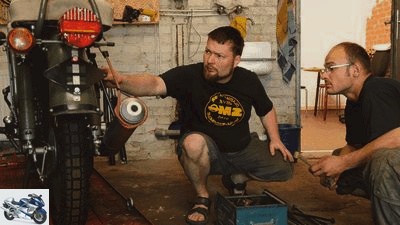
Siemer
Gabor and Ronnie (right) make an ETZ 250 fit for a trailer truck.
Private individuals had already taken over the trade in two-stroke parts before that. A handful were able to establish themselves, and Gabor Pirntke is one of them. A picturesque backyard low-rise building with several rooms occupies its shelves, crammed with spare parts. Much new, much from slaughtering – and all in all astonishingly comprehensive. It pays off that only a few types revived the five MZ decades. The two women in the four-person team are responsible for the spare parts business and generate most of the company’s sales online. Niki and Nadine handle orders all day long, mostly from Germany, often from Scandinavia, England or Holland, sometimes even from Cuba – formerly strong MZ markets. If there is time, update the online presence. Gabor also carries out repairs. Mostly from Ronnie, because the boss often has to do telephone counseling. Does this also fit with the ES 250/1 or is that with the TS 150 different from all the others? I bought this and that from you, but how do I get it installed? There is still a lot of screwing and restoration work done by ourselves, and Gabor definitely understands that. Let him do the engine and do the rest in his own garage. The simple structure, the rock solid design of all MZ find their justification here, and Gabor likes things like that. He is just as little interested in throwaway products as in over-bred glare.
Perhaps that outlines the core of the growing passion for MZ, including that of Gabor Pirntke: People no longer feel like throwing away, and especially not at the Emme. You don’t even throw away a piece of German history. No, you keep that and you move it. That is why Gabor Pirntke gets on his MZ team when he wants to go to Finland. Others take a € 16,000 super tourer. But they have more fun?
Interview with Gabor Pirntke
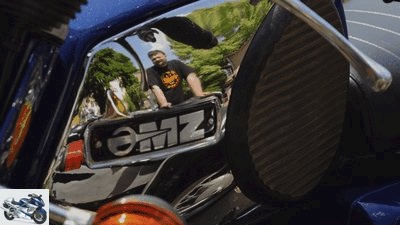
Siemer
The focus of the workshop and spare parts business is MZ.
More and more beautifully restored MZs are appearing. What’s going on there??
Old MZs have their natural historical value, like post-war motorcycles from West German brands. But the situation in the GDR, and in the first few years also in the new federal states, where the majority of the inventory is located, just prevented us from taking care of beautiful restorations. That will now be made up for.
Which MZ types are preferred??
First of all, the immediate MZ predecessors, i.e. the IFA models RT 125 and BK 350.The latter is something special with its two-stroke boxer engine and cardan drive, it went into series production in 1953 and was relatively smaller by 1959, most recently under the name MZ Number of pieces built. Then the ETS is very popular: around 1970 in the GDR there was little point in dreaming of a Honda CB 750. But the ETS 250, which was achievable, had a sporty line and a telescopic fork.
And what about the volume models?
The ES 250 was in its five stages of development from 1956 to 1973 in the program. The early models are really old, the ES 250/2 is one of the young timers – despite its nostalgic exterior. The small models were still around until 1977 – crazy, right? The first 250s had a so-called double port cylinder with two outlets. On the one hand, they are quite rare and sought after, but on the other hand, they are not as thermally stable as later versions. In principle, interest in all ES models has been increasing for several years, especially the 250.
The successor model, the TS, marked the transition from the youngtimer to the utility motorcycle?
Not quite. The TS – and here again especially the 250cc machine – is increasingly finding its way into collectors’ hands. It is also coveted as a tractor that visually harmonizes very well with the MZ sidecar.
And where are the prices?
For a largely complete ES 250, depending on the condition and year of construction, between 1500 and 3000 euros are due. Then they are either well restored or – which is slowly becoming even more popular – in their original, beautifully patinated condition. The ES 175 is at least 500 euros less, as is the TS 250. And with the small models, everything is somehow included, from sensational bargains for 400 euros to restored 1500 euros. You will rarely get a good ETS 250 for less than 2500 euros.
Then there are the teams. Enjoy a special boom?
You cant say it like that. I think, given the quality of all MZ teams, the prices are still moderate. It starts at less than 2000 euros and rarely exceeds 4000 euros. For 300 models – the ones from ES and ETZ – the prices are a little higher.
What about the parts supply?
From the RT to the ETZ there are still all wear parts, and problems are also the exception with the other parts, for example headlight reflectors for the ES 125/150. But original parts are still appearing because old dealers are leaving or because smaller warehouses abroad are being cleared. There are also many replicas, mostly of good quality. When it comes to prices, we are mostly in the lower range compared to other European classic and youngtimers.
Nothing lasts forever: where do MZ single-cylinders fail??
Apart from the fact that alternators are also known to age, I think the 6-volt system installed up to and including TS is no longer up-to-date. So you should convert to a 12-volt system and then install an electronic ignition. As a matter of principle, you should have the engine done after years of downtime – keyword: barn find. New bearings, new seals, etc., that rarely costs more than 450 euros, but saves a lot of trouble.
Which people determine the MZ scene??
For the most part those who have had contact with these motorcycles before. There are definitely 80-year-olds who still have their old Emme in good shape. Or something younger who is restoring their teenage vehicle. But increasingly we have customers who simply want a robust and comparatively inexpensive motorcycle with charm.
Contact Gabor’s MZ shop
Langhansstrasse 134, 13086 Berlin
Telephone: 030/96069710
www.gabors-mz-laden.de
Related articles
-
Motorcycle fair in Milan EICMA 2021 Presented by Kaschel motorcycles Model presentation Motorcycle innovations from EICMA Little respite After the model…
-
Presentation of the Zongshen ZS 750
motorcycles Presentation of the Zongshen ZS 750 Presentation of the Zongshen ZS 750 The fight with the dragon The Zongshen ZS 750 is the first big bike…
-
Presentation of the Gilera 850 prototype
counselor technology & future Presentation of the Gilera 850 prototype Presentation of the Gilera 850 prototype Square, practical, good With a solid,…
-
Presentation of electric heating aids for winter drivers
mps photo studio clothing Presentation of electric heating aids for winter drivers Presentation of electric heating aids for winter drivers Hot shots…
-
Zero electric motorcycles: first shop opened in Europe
Zero Motorcycles counselor traffic & business Zero electric motorcycles: first shop opened in Europe Zero electric motorcycles First shop opened in…
-
Orth motorcycles Sachs presentation and party Sachs presentation and party Yeah, rock ‘n’ roll It is intended to revive the cult around the moped for a…
-
Fred Siemer Sports & scene Scene: Moto Guzzi Baker Scene: Moto Guzzi Baker The workshop of the Guzzi specialist Content of Anyone who trades with Moto…
-
Laverda specialists Orange Cycle Team
Siemer 24 pictures Siemer 1/24 Siemer 2/24 Siemer 3/24 Siemer 4/24 Siemer 5/24 Siemer 6/24 Siemer 7/24 Siemer 8/24 Siemer 9/24 Siemer 10/24 Siemer 11/24…
-
Presentation of the Kawasaki ZX-12R
motorcycles Tourer Presentation of the Kawasaki ZX-12R Presentation of the Kawasaki ZX-12R Now it’s striking twelve MOTORRAD caught the brand new…
-
New presentation: Moto11 checked cotton textile shirt for women and men
Buse. 5 pictures Buse. 1/5 The new checked shirt from Buse is available for women and men. Buse. 2/5 Men can choose between three color variants. Buse….